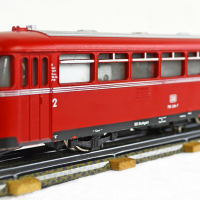The Ultimate Guide in Toy Train Collections
For some people, collecting toy trains isn’t just another hobby or interest; it’s a way of life. The concept of collecting toy trains has been around for centuries. Nearly everyone has some type of connection to toy trains, whether it is an annual display around the Christmas tree or a daily passion to find and collect unique individual pieces to add to their toy train system. People who collect toy trains are indeed special types of people who have a true connection to these miniature locomotives. Luckily, there’s a magazine to suit their needs – Classic Toy Trains.
Classic Toy Trains magazine is a monthly publication that focuses on the latest news and events in toy train collecting. In it, you will find helpful guides to toy train auctions, events, shows and conventions, as well as articles regarding various antique toy trains. For the true toy train enthusiast, you’ll also find several “how-to” articles, including how to build your on toy trains, how to put together tracks, how to rebuild toy train engines, or how to tune-up your old antique toy trains.
One interesting article from January 2007 discussed the death of two prominent collectors of the toy train industry. Bruce Walthers and Bobbye Hall, both popular in the model railroad industry, passed away and left the toy train community stunned over their loss. Walthers once served as president of William K. Walthers, Inc, a model railroad manufacturing firm in Milwaukee, Wisconsin. The firm became the largest producer of model railroad products in entire world. Hall was known primarily as the first woman to work with Japanese model railroad manufacturers and was the founding person behind Hallmark Models. The recipient of several awards and recognitions within the railroad model industry, her death was a surprise to many avid collectors around the world.
Classic Toy Trains magazine also produced a series of articles entitled “Basics of Toy Trains.” This series covered everything a beginner to the industry would want to know, from the history of popular manufacturers such as Lionel and Marx to the current toy trains sold in today’s market. The series even covered “tricky train terms” that green collectors are not likely to know and understand. You can also explore the questions and answer section, where questions covering a wide variety of topics in toy train collecting are answered. For example, it covers proper toy train storage and display techniques, how to apply decals to your toy train, and how to spot fake “antique” toy trains for sale.
A subscription to Classic Toy Trains magazine varies depending on the length of time you wish to keep your subscription. 9 issues are available for $39.95, 18 issues for $74.95, and 27 issues for $106.95. If you are an enthusiastic toy train collector, or would like to give a gift to someone interested in the hobby, this is the perfect all-inclusive magazine!




